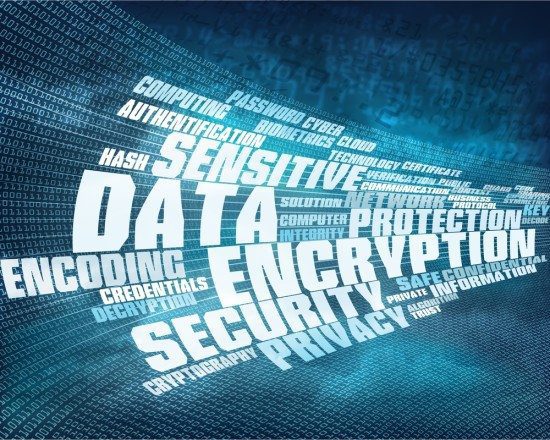A rise in stolen DNA and fingerprints to commit fraud and identity theft
If 2015 is to be considered “the year of the breach” with almost weekly compromises becoming the norm, 2016 will be considered to be the “year of the exploit”.
We will see the stolen Personally Identifiable Information (names, addresses, financial data and even biometrics like DNA and fingerprints) and Intellectual Property (IP) of organisations exploited to commit fraud, replicate identities and compromise consumers, commercial organisations and intelligence activities. This will increase the hacking of organisations that hold DNA and other data like fingerprints as these unique signatures are increasingly used more often for authentication to devices and services.
This growing area of criminal activity will require a more holistic approach to monitoring threat levels across organisations through specialised cyber security and intelligence software.
Greater investment in cyber intelligence technologies that enable rapid detection and response
According to Gartner: By 2020, 60% of enterprises’ information security budgets will be allocated for rapid detection and response approaches, up from less than 10% in 2012. Companies now understand sophisticated cyber-criminals have rendered traditional perimeter defenses, like proxies, firewalls, VPNs, and antivirus and malware tools ineffective. A priority for 2016 will be to detect threats inside the firewall as they develop to defend and ultimately prevent significant damage from occurring.
A better understanding of network compromise
As cyber legislation becomes tighter and requires increased accountability, companies will need a better understanding of any network compromise. Many are turning to advanced analytics to work as a network security guard that identifies threats and raises the alarm in order to discover the three stages of a hack :
- Find what’s coming into the network.
- What it’s doing inside the network.
- Where it’s leaving the network and what it’s leaving with.
A shift to higher impact cyber crime
Higher consequence cyber crime is on the rise with nation states and organised criminals continuing to steal IP and other valuable information to gain economic advantages or cause a negative economic impact in rival countries. Groups will become bolder in their hacking operations, not being content with just stealing data anymore, but also affecting the functionality of systems or even destroying the stolen data so a company can no longer access it.
Skills shortage of people with the right cyber security skills
Following a year of many high-profile companies being hacked and the realisation from many company directors and CEOs that a data breach could cost them their jobs, companies are spending more on cyber-security and increasing the size of their cyber teams. People who have direct first-hand experience in identifying cyber risks and improving defense are in high demand but low supply and this will get worse as the size of security teams increase.
The rise of Security as a Service
Still, with such a big shortfall of IT security workers, companies are starting to adopt Security as a Service (SECaaS) as a stop-gap measure. This essentially outsources their security to another company that has more expertise and can scale more cost-effective security to all of its customers. Companies need to understand that while they can outsource responsibility they cannot outsource accountability so need to consider the benefits and risks involved.
Greater scrutiny of 3rd party suppliers supplying critical services or holding sensitive information
Many organisations do not adequately assess the security practices of third-party partners and supply chains despite findings that consistently point to breaches caused by third parties. For example, financial losses caused by insider and 3rd party threats results in breaches of intellectual property and trade secrets estimated at more than $US1 trillion world wide, according to a survey by McAfee.
While most organisations do now include security provisions in contract negotiations with external vendors and suppliers, what needs to change is the level of focus and standard of security expected. Currently these standards are too low and organisations must hold themselves and others to higher levels of cybersecurity or risk a future breach.
A greater move towards data sharing
Governments are finally wising up to the fact that cybercrime, cyber espionage and cyber-attacks are a defense issue. The only real way to combat the threat is through intelligence, and as many governments do with other forms of security intelligence, cyber security threat information will begin to be shared between governments and commercial organisations alike. Moves are already being made in the U.S. in this regard, with the Cyber Security Information Act.
We will continue to see these types of initiatives being adopted by other governments, once again moving cyber security and breaches to a regulatory space. Commercial organisations and government departments need to be prepared for all that this will bring, and this conversation will once again become a board-level/ministerial conversation.
Understanding the risk of air travel
Airlines inherently understand risk – they trade on their safety records, as a key part of their currency. However, as cybersecurity moves towards becoming a defense operation, airline executives, workers and indeed passengers will begin to understand the risks associated with having planes that rely entirely on technology. Variants of the Stuxnet virus could potentially be used to wreak havoc across the globe. This virus is essentially a computer worm that targets industrial control systems used to monitor and control large scale industrial facilities, such as power plants and dams. Attackers are able to take control of the systems without the operators knowing.
Air traffic controllers too need to be mindful of this type of compromise. A greater focus on this type of protection will begin to emerge in 2016, with airlines eager to protect their safety records.
[su_box title=”About Paul Stokes” style=”noise” box_color=”#0e0d0d”] Paul Stokes was appointed Wynyard Group COO in March 2012 and is responsible for business development, sales, services and support globally. Paul was previously Managing Director of Wynyard Group’s risk management (Methodware) and investigations business units. Prior to joining Wynyard Group, Paul was Vice President and Global Client Executive for Perot Systems and has previously held roles as Head of Capital Markets for Cognizant, Detica and Roundarch.[/su_box]
Paul Stokes was appointed Wynyard Group COO in March 2012 and is responsible for business development, sales, services and support globally. Paul was previously Managing Director of Wynyard Group’s risk management (Methodware) and investigations business units. Prior to joining Wynyard Group, Paul was Vice President and Global Client Executive for Perot Systems and has previously held roles as Head of Capital Markets for Cognizant, Detica and Roundarch.[/su_box]
The opinions expressed in this post belongs to the individual contributors and do not necessarily reflect the views of Information Security Buzz.



